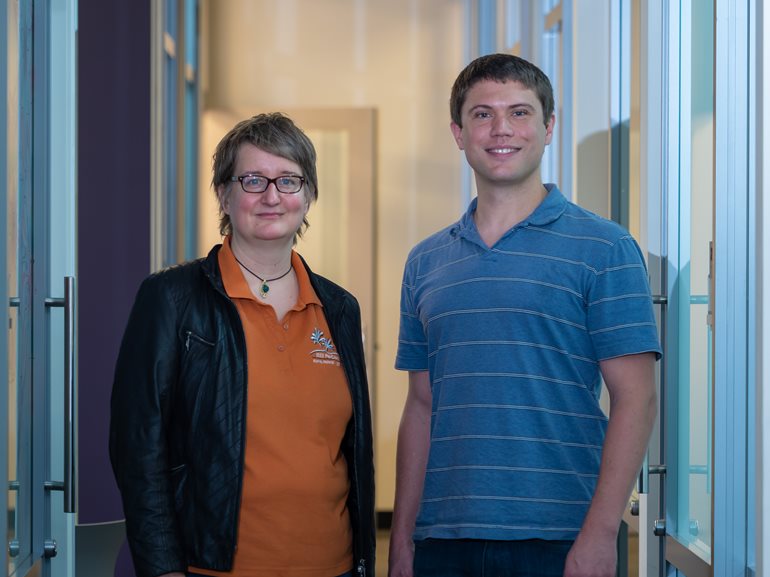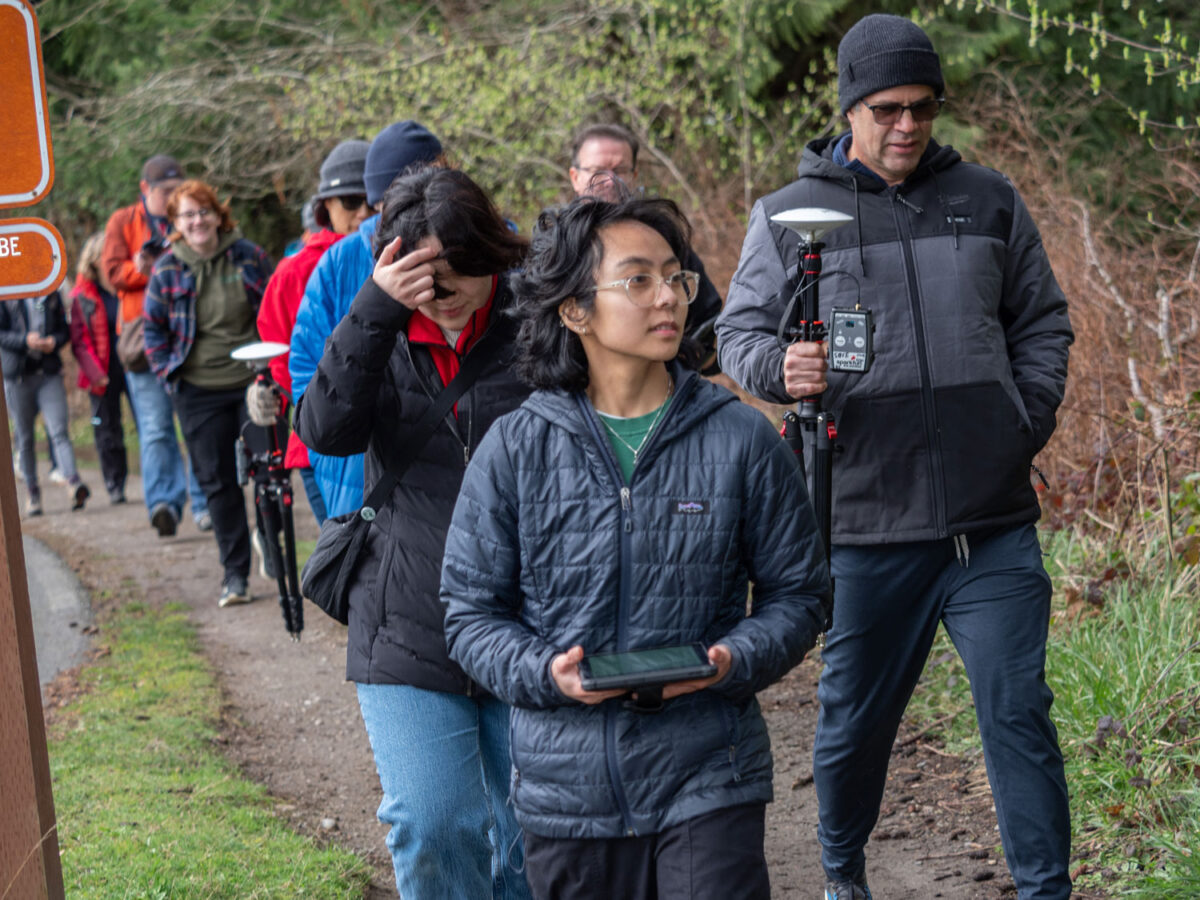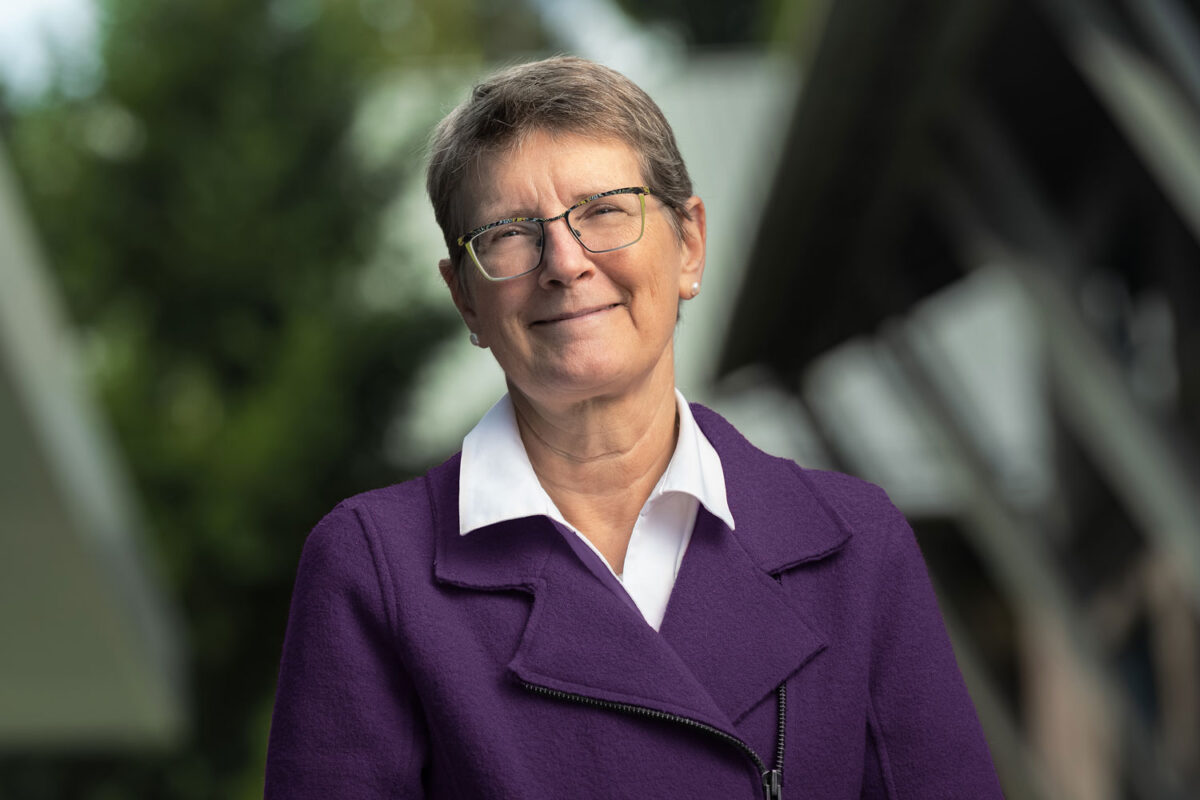
Over the next three summers, University of Washington Bothell students will be traveling to Germany to develop crowdsensing technology at the University of Bamberg, which conducts smart city research in the Bavarian city.
They’ll be taking advantage of a relationship developed by Brent Lagesse, an associate professor in the Computing and Software Systems Division of UW Bothell’s School of STEM.
On sabbatical for the 2019-20 academic year, Lagesse is a visiting professor during the winter at the University of Bamberg. His colleague there is Daniela Nicklas, a professor of information systems and applied computer science. Acquainted from attending many of the same conferences, the two built on shared research interests in smart city technology.
She is concerned with data flow, while he is concerned with security and privacy.
Smart city research
Lagesse has been teaching and conducting cybersecurity research at UW Bothell since 2013. He received a $300,000 National Science Foundation grant in 2019 to continue his work enhancing security and privacy in the field of connected devices, generally known as the internet of things.
The grant also funds five students a year on 10-week research visits to Bamberg in 2020, 2021 and 2022.
The summer trips are also an opportunity for a study-abroad experience, Lagesse said, noting that about half the students who applied for the grant and who received the first year’s grant have never left North America.
The first cohort of five student researchers — four undergraduates and one graduate student — travel to Bamberg in June. They will be looking to incorporate more crowdsensing into the city’s system in ways that protect both the citizens and the city.
The city uses sensors, for example, to collect information about parking and air quality. Sensors on garbage cans also can tell the city how often they need to be emptied.
Student collaborations
“Everyone is carrying around something always connected to the internet,” Lagesse said, holding up a phone. “And it has tons of ability to sense all kinds of things around them.”
Smartphone users who ride bikes can share the best routes. Phones can also create real-time Wi-Fi maps, showing where access is available, Lagesse said.
But what if some users intentionally manipulate their data? In one well-known example, Lagesse said, residents of a neighborhood unhappy with traffic falsely reported accidents so that internet mapping software would route cars elsewhere. Malware is also a risk. How do you know if you can trust the data?
To address these types of issues, said Lagesse, the students in the first year will focus on ensuring the data coming from phones is not malicious, using a combination of machine learning and game theory to build defense mechanisms.
“The second year, we’re going to look at the privacy of the actual people who are contributing their information, so their privacy is not being violated,” Lagesse said. “Then the third year, we want to be able to incentivize them to contribute information and make sure that they don’t exploit the incentive system.”
The Bamberg-Bothell connection
As a visiting professor at Bamberg, Lagesse is making a series of week-long visits to Bamberg to teach a course on security and privacy. He is also teaching a project course using the same software the UW Bothell students will use for their summer research.
“I’m preparing their students so they’ll be able to work with our students,” he said.
Nicklas, for her part, will pair five Bamberg students with the Bothell students. In the future, under the universities’ memorandum of understanding, Bamberg students may come to UW Bothell for a project, Nicklas said.
Building on this relationship, Lagesse also arranged for Nicklas to visit the UW Bothell campus in January of this year to give a guest lecture in a computer science class and to meet with other faculty about possible collaborations.
The right city
Bamberg is a favorable city for this collaboration, in part because it was long the site of a large U.S. Army base, which closed in 2014. Residents grew up with American culture, such as cinema and basketball, Nicklas said.
Now a city of about 70,000 residents, the university’s 14,000 students are well-integrated into the community, she added. The city also is a world heritage site that attracts tourists to see it Medieval architecture. And it’s a cruise stop on the Main River, which is part of a Rhine-Danube canal-connected system, popular for European tours.
Lagesse calls the city a practical environment. Nicklas calls it the “wild,” where students learn to explain themselves to regular people.
“I believe this is an important competency for computer scientists to be able to talk to noncomputer scientists about what they are doing,” Nicklas said. “If you are somewhere in the city installing a sensor and a citizen comes up to you and asks: What are you doing on my street? You have to be able to talk to them and convince them you are not an evil person, that it’s for their good,” she said. “And you have to use non-technical terms. I like them to learn that.”
Nicklas also likes the idea of teaming students from the two universities. “Many students will work for companies in international environments,” she said. “Nowadays people will most likely work with people who are not homogeneous.”



